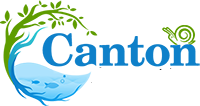Discover the key disparities between submerged and emersed aquarium plants to enhance your aquatic gardening knowledge.
Key Characteristics of Submerged Aquarium Plants
Submerged aquarium plants are plants that grow entirely underwater in an aquarium.
They have adapted to live in aquatic environments and have specific characteristics that allow them to thrive in water.
These plants have long, thin leaves that are usually green or reddish in color.
They also have well-developed root systems that anchor them to the substrate.
Submerged aquarium plants are known for their ability to oxygenate the water and provide hiding places for fish and other aquatic organisms.
Some common examples of submerged aquarium plants include Anubias, Java Fern, and Vallisneria.
Key Characteristics of Emersed Aquarium Plants
Emersed aquarium plants are plants that can grow both above and below the water surface.
They have adapted to live in both aquatic and terrestrial environments and have specific characteristics that allow them to thrive in both.
These plants have leaves that are usually larger and thicker than submerged plants, and they can vary in color from green to red.
Emersed aquarium plants have well-developed root systems that anchor them to the substrate when submerged, and they can also grow roots that extend above the water surface when emersed.
These plants are known for their ability to absorb nutrients from the water and the air, making them highly adaptable.
Some common examples of emersed aquarium plants include Amazon Sword, Cryptocoryne, and Dwarf Sagittaria.
Benefits of Submerged vs Emersed Plants in Aquariums
Submerged plants provide numerous benefits to aquariums.
They help to oxygenate the water by releasing oxygen as a byproduct of photosynthesis.
This is especially important in densely stocked aquariums or aquariums without aeration.
Submerged plants also absorb nutrients from the water, helping to reduce algae growth and maintain water quality.
Additionally, these plants provide shelter and hiding places for fish and other aquatic organisms.
On the other hand, emersed plants offer different advantages.
They can help to reduce nitrate levels in the water by absorbing them through their roots.
Emersed plants also provide a natural and aesthetically pleasing look to the aquarium, as they can grow both above and below the water surface.
Overall, a combination of submerged and emersed plants can create a balanced and healthy aquatic environment.
Challenges Faced When Growing Submerged vs Emersed Plants
Growing submerged and emersed plants in an aquarium can come with its own set of challenges.
Submerged plants require adequate lighting to support photosynthesis, and insufficient light can lead to stunted growth or even plant death.
These plants also require a nutrient-rich substrate or regular fertilization to thrive.
Emersed plants, on the other hand, need a higher humidity level and may require additional misting or a humidifier to provide the optimal environment.
They also need regular pruning to prevent overcrowding and maintain their desired shape.
In addition, both submerged and emersed plants can be susceptible to algae growth, which can be controlled through proper maintenance and water quality management.
Tips for Successfully Maintaining Submerged and Emersed Aquarium Plants
To successfully maintain submerged aquarium plants, it is important to provide them with the right conditions.
This includes providing adequate lighting, a nutrient-rich substrate, and regular fertilization.
It is also important to monitor water parameters such as pH, temperature, and nutrient levels to ensure optimal growth.
Regular pruning and maintenance, such as removing dead or decaying leaves, is also necessary to prevent the spread of diseases or algae.
For emersed aquarium plants, it is important to create a humid environment by misting the plants regularly or using a humidifier.
Proper lighting and a nutrient-rich substrate are also essential for their growth.
Regular pruning and maintenance, including removing any dead or decaying leaves, will help to keep the plants healthy and prevent overcrowding.
Overall, providing the right conditions and regular care will ensure the successful growth and maintenance of both submerged and emersed aquarium plants.




Leave a Comment